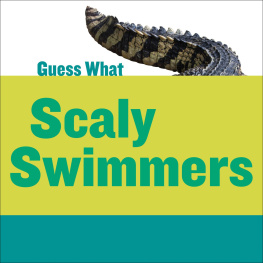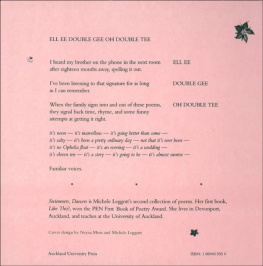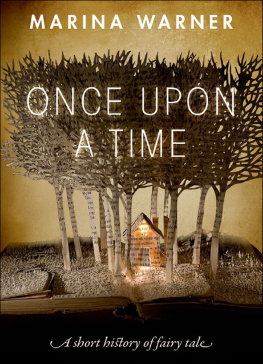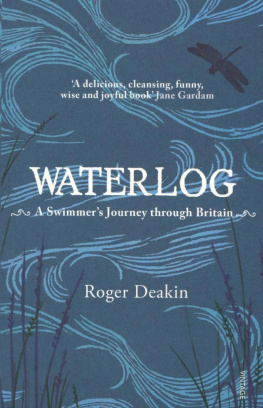William W. Warner - Beautiful Swimmers
Here you can read online William W. Warner - Beautiful Swimmers full text of the book (entire story) in english for free. Download pdf and epub, get meaning, cover and reviews about this ebook. year: 1977, genre: Detective and thriller. Description of the work, (preface) as well as reviews are available. Best literature library LitArk.com created for fans of good reading and offers a wide selection of genres:
Romance novel
Science fiction
Adventure
Detective
Science
History
Home and family
Prose
Art
Politics
Computer
Non-fiction
Religion
Business
Children
Humor
Choose a favorite category and find really read worthwhile books. Enjoy immersion in the world of imagination, feel the emotions of the characters or learn something new for yourself, make an fascinating discovery.
- Book:Beautiful Swimmers
- Author:
- Genre:
- Year:1977
- Rating:4 / 5
- Favourites:Add to favourites
- Your mark:
- 80
- 1
- 2
- 3
- 4
- 5
Beautiful Swimmers: summary, description and annotation
We offer to read an annotation, description, summary or preface (depends on what the author of the book "Beautiful Swimmers" wrote himself). If you haven't found the necessary information about the book — write in the comments, we will try to find it.
Beautiful Swimmers — read online for free the complete book (whole text) full work
Below is the text of the book, divided by pages. System saving the place of the last page read, allows you to conveniently read the book "Beautiful Swimmers" online for free, without having to search again every time where you left off. Put a bookmark, and you can go to the page where you finished reading at any time.
Font size:
Interval:
Bookmark:

This book made available by the Internet Archive.



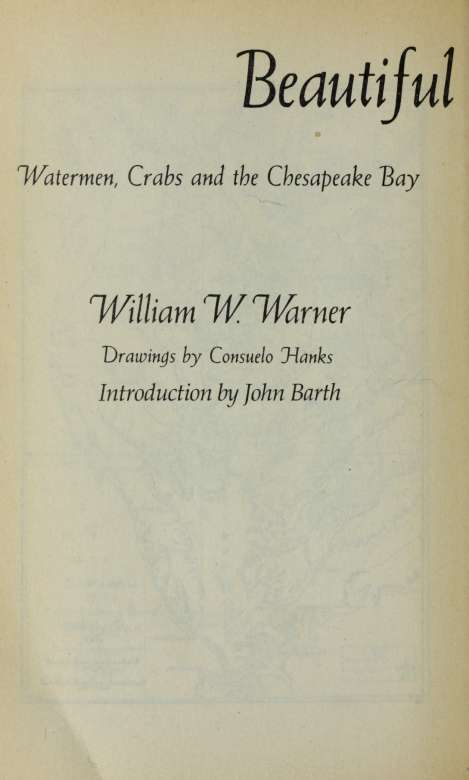
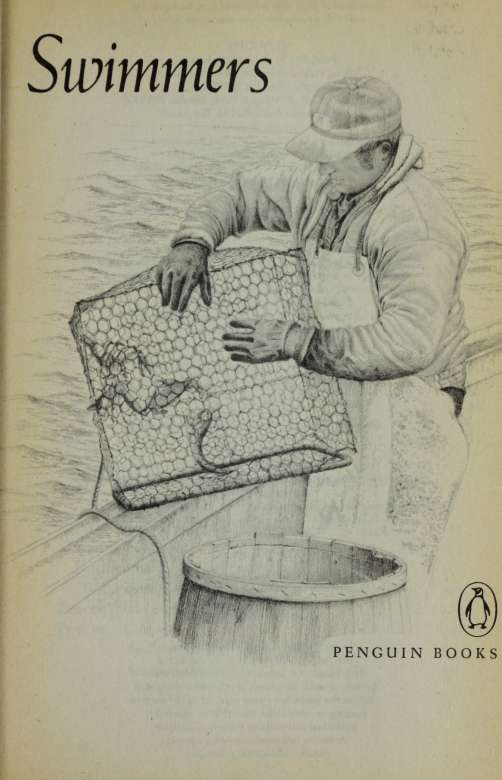
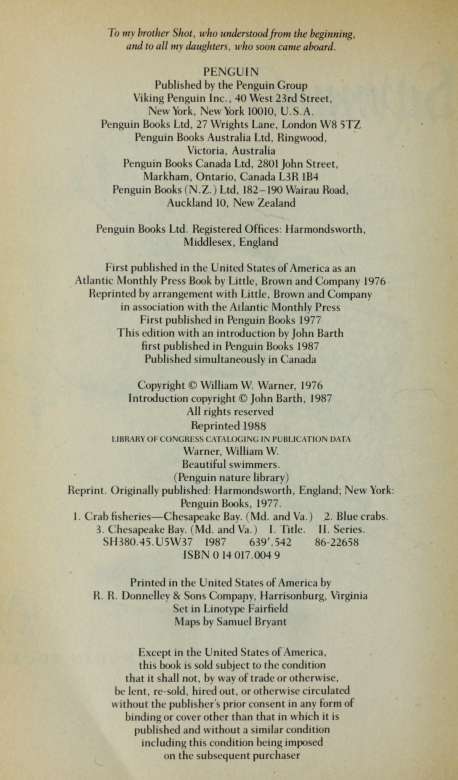
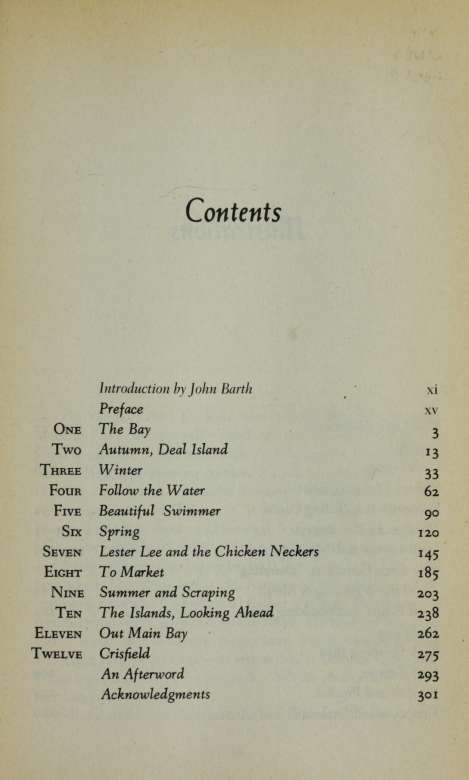
Blue Crab Abdomens 17
Potting 25
Crab Dredge 46
Winter Dredging Boats 51
Pocomoke Log Sailing Canoe 71
Chesapeake Bay Bugeye 74 75
Crab Larvae and Megalops 104-105 Blue Crab Courtship, "Doubling"
and the Beginning of Moult 112-113
Crab Pound and Shedding Floats 122
Trotlining 162
Crab Scraping Boat 207
Crab Scrape 209
Burrfish and Pipefish 224
Hooper Island Draketail 269
Introduction
In 1976, the poet Peter Davison, who is also editor of the Atlantic Monthly Press, sent me galley proofs of a work of nonfiction he was about to publish. It had to do with the Chesapeake Bay, my home waters. He'd appreciate my opinion, if I was interested.
I took a quick look Beautiful Sivimmers: Watermen, Crabs, and the Chesapeake Bay, by William W. Warnerand then a less quick. Born and raised in their neighborhood, I thought I knew Atlantic blue crabs pretty well. I'd been eating them since I was weaned, and catching them since young boyhood. I took my first child crabbing when she was six weeks old, lying on a cotton blanket in the bottom of a borrowed johnboat while her young parents worked a trotline somewhere on the Choptank River. Through my first published novel, that delicious, pugnacious, locally ubiquitous and altogether engaging crustacean swims like a sidewise metaphor. What could this Warner, a nonnative, tell me about crabs, watermen, and the Bay?
Well, for starters he explained the beast's zoological name, Calli
\i
Introduction
nectes sapidus: the beautiful (also savory) swimmer. That savory bit of nomenclature, which I could have made good use of in my own writing, had somehow escaped my notice all those years. And though I grew up with working waterfolk and their children on Maryland's Eastern Shorein a county eighty percent of which is sub-sea-level tide marsh acrawl with blue crabs, abuzz with mosquitoes, aslurp with oysters and soft-shell clamsI'd taken them for granted: fixtures of the estuarine tidescape, like loblolly pines and herring gulls. I'd never worked with the watermen on their boats or paid them the sustained, high-quality attention that Warner pays them.
What were "ehicken-neckers'? I could guess, but I didn't know. Why does the commercial crabber typically start his workday well before dawn? How does he choose the best place to set his wire-mesh traps, and what are the history and the rationale behind their ingenious design? Where do all those millions of beautiful swimmers disappear to in winter? How do the watermen themselves feel about them, and about the continent's largest estuarine system: the fragile, ecologically imperiled Chesapeake?
I didn't rightly know, or couldn't rightly remember, until William Warner told me. I read straight through those proofs and reported to his editor that as a familiar of the territory, I found Beautiful Swimmers appealing indeed (even without Consuelo Hanks's meticulous illustrations, absent from the galleys): perhaps the best nonfiction about the Bay I'd ever come across. I cautioned him, however, that our placid, low-lying, shallow-draft Chesapeake and its denizens have not the fame or picturesqueness of Down-East lobstering or Gloucester's captains courageous. I opined that he might be making an editorial miscalculation; that Warner's book was probably better suited to a regional publisher, maybe a local university press. I doubted that Minnesotans and Californians would find it interesting.
Peter thanked me, but said he'd take that chance. Beautiful Swimmers soon after became a national nonfiction best-seller and won the Pulitzer prize for the year's best work of American general
Introduction
nonaction, and I retired from my brief career as an estimator of publie response.
A deeade later, Warners treatise on Callinectes sapidus remains the standard, indispensable introduction not only to that remarkable animal but to the remarkable piece of geography it principally inhabits. It is the book we tidewater enthusiasts press upon strangers to our turf, or bog. Its appeal is in the author's combination of solid, even massive, information about his subject and his easy handling of it: a beguiling narrative-expository style and an unsentimental affection for the hardworking, self-reliant watermen, their milieu, and their quarry.
Particularly for their quarry. Blue crabs are not awe-inspiring like whales, formidable like sharks, splendid like marlins, or near-humanly lovable like porpoises. They are small, quick, alert, aggressiveyet endearing all the same in their feistiness, their readiness for unequal combat with their captor. I have watched one swim full speed sidewise for fifty feet after the half-raised anchor of my sailboat, snapping at it again and again while in mid-copulation with his mate. Accidentally dumped onto your dock en route from trap to holding pen, he is more likely to stand his ground with upraised claws, a bantamweight boxer looking for an opening in your defenses, than to scuttle off at once to freedom. Make a pass with the tongs to retrieve him; he'll make five quick jabs to your one, and likely undo himself by snatching the tongs before they can snatch him, and refusing to let go. Double jeopardy for such a battler is too cruel; many s the one my wife and I have let go in those circumstances for valor, applauding his final, almost grudging withdrawal to his element.
Ah, and the tender intricacies of their mating ritual, and the subtle signsdecoded by the watermen themselves only within my generationof their molting cycle, and the knowledgeable tenacity of their commercial pursuers: that insular, sturdy (and dwindling) breed who "follow the water"... Warner inhabits their lives as he inhabits their quarry's, with informed respect and lively, clear-eyed empathy. He gets the crabbers' speech right, their values and atti
Introduction
tudes, as he gets his information right. The book is as fascinating for its sociology as for its ecology and natural history.
Beautiful Swimmers is also witty, gracious, wise. Rereading it ten years after its first appearance, I'm impressed anew by its thoroughness and charm; by the unpatronizing ease with which its soundly civilized narrator moves among the tidewaterfolk and the scrappy creature who is their principal livelihood. This book is their delightsome present testament. If worse comes to ecological worst, it will be their monument, and a worthy one.
John Barth
Langford Creek, Maryland, 1986
Preface
Commercial crabbing in the Chesapeake Bay reveals itself very slowly to the outsider. Many who cruise the Chesapeake for pleasure are unaware that right under their bows, so to speak, a major national fishery quietly goes about its business. I cannot say exacdy why this is so. In the autumn we both notice and celebrate the return of America's only commercial sailing vessels, or the elegant skipjacks that start to dredge for oysters during the first week of November. Similarly, we marvel at the labor of the tongers, who spend long cold hours in smaller boats in search of the same prize. But, come late spring and summer, we tend to ignore the crabber. Perhaps it is because his early hours are not our hours. Or the waters he works are for the most part marshy, buggy, and far removed from our choice cruising grounds. We do not much really think of him, in fact, unless by chance we have to steer through a forest of bobbing pot buoys. We curse gendy, pray that we will not pick up a warp in our propellers, and continue on our way.
Font size:
Interval:
Bookmark:
Similar books «Beautiful Swimmers»
Look at similar books to Beautiful Swimmers. We have selected literature similar in name and meaning in the hope of providing readers with more options to find new, interesting, not yet read works.
Discussion, reviews of the book Beautiful Swimmers and just readers' own opinions. Leave your comments, write what you think about the work, its meaning or the main characters. Specify what exactly you liked and what you didn't like, and why you think so.



